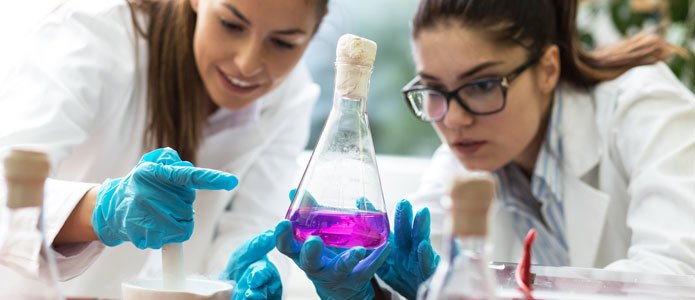Carrying on research next door to Nobel laureates – this is possible at several institutions in Germany. For young international scientists, Germany is also an attractive research location because of its good infrastructure and excellent academic supervision.
Who wouldn’t gape if two Nobel Prize winners stood next to him or her in the canteen queue? Neuroscientist Myroslav Gebura has now got used to this. When the PhD candidate goes to eat, he often encounters the professors and Nobel laureates Stefan Hell and Erwin Neher, who both do research at the Max Planck Institute for Biophysical Chemistry in Göttingen. Inspiring surroundings for the young Ukrainian Gebura, who is doing his PhD at the Institute. He is also a member of the Göttingen Graduate School for the Neurosciences, Biophysics and Molecular Biosciences (GGNB). The school is based on a joint initiative of the University of Gottingen, the three Max Planck Institutes in the city and the German Primate Centre. The PhD student values the good supervision at the Graduate School. There are many seminars, he says, on scientific and methodological subjects. He is not left alone with his research work but provided with excellent coaching. “The lab where I do my work is one of the best in the world in my discipline”, emphasizes the 26-year-old. “It is the place where numerous innovations that have attracted world-wide attention originated.”
An attractive research location
The reputation of a university, the expertise of the staff at an institute and the attractiveness of the research infrastructure – it is primarily site-specific factors that are decisive in choosing Germany as a research location. The number of young international scientists who come to Germany to do their doctorates or postdocs or for guest stays has been increasing for many years. This may be seen from the
Study on the Motivations of Young International Scientists at German Universities (MIND) commissioned by the German Rectors’ Conference (HRK) and the German Academic Exchange Service (DAAD). More than 40,000 scientists and artists were employed at German universities in 2014. This figure includes PhD students, who are generally employed at an institute and earn between 1,100 and 1,400 euros per month. Their livelihood is thus ensured. “I don’t have to worry about my financial situation and can concentrate completely on my research”, says Gebura with satisfaction.
The geographer Prosper Evadzi from Ghana has his office in the Helmholtz Centre Geesthacht – Centre for Materials and Coastal Research. There he studies the effects of climate change on the coastal areas of Ghana. The father of three especially values the close interdisciplinary cooperation. “Everyone here is working on similar subjects, albeit with different focal points”, the PhD student says. “There’s always someone here whom I can talk to and discuss my problems with.” Like Myroslav Gebura, the Ghanaian scientist attends a graduate school. The International School of Integrated Climate System Sciences (SICSS) is part of an excellence cluster that brings together scientists from leading research institutes in climate sciences such as meteorology, oceanography and biochemistry in a training course.
Various paths lead to the PhD
Structured doctoral programmes that resemble the Anglo-Saxon PhD system carry increasing weight in Germany. At present the German Research Foundation (DFG) is funding 45 international graduate schools in which research teams work interdisciplinarily on overarching questions. Thinking outside the box is here the keynote, for the exchange among scientists in neighbouring fields is intense. Participants are integrated into a team in which they regularly present their results. This generates significantly more structure than the so-called ‘individual doctorate’, which has a long tradition in Germany. On this approach, PhD students seek out a professor as their supervisor, the so-called “Doktorvater” (doctor father) or “Doktormutter” (doctor mother), and work independently on their dissertations. This requires a high degree of individual initiative and discipline. In exchange the PhD student has plenty of scope and can himself choose where he wants to carry on his research – at a university, a non-university research institute or in industry.
Insights into theory and practice
The engineer Rim Zerriaa from Tunisia opted for the dual doctorate programme at the Graduate School of Excellence Advanced Manufacturing Engineering (GSaME) at the University of Stuttgart. It combines scientific research with practical phases in industry. “For mechanical engineers, this concept is optimal: I get a detailed insight into both research and industry. For four years I have time to pursue my research topic from different angles. I also like that I can myself choose when exactly I do work at the Institute or at the company”, emphasizes the 30-year-old.
Working at a company could also be beneficial from a completely different angle. In science, especially in international research teams, English is the predominant language; many young researchers therefore lack the opportunity to improve their knowledge of German in daily contact with their colleagues. In a company, on the other hand, there are many more points of contact with the German language. Here researchers often have to do with the most various departments and employees, in many cases in German. For a scientific career in Germany, this is an advantage, as the MIND study of international scientists very clearly shows.
